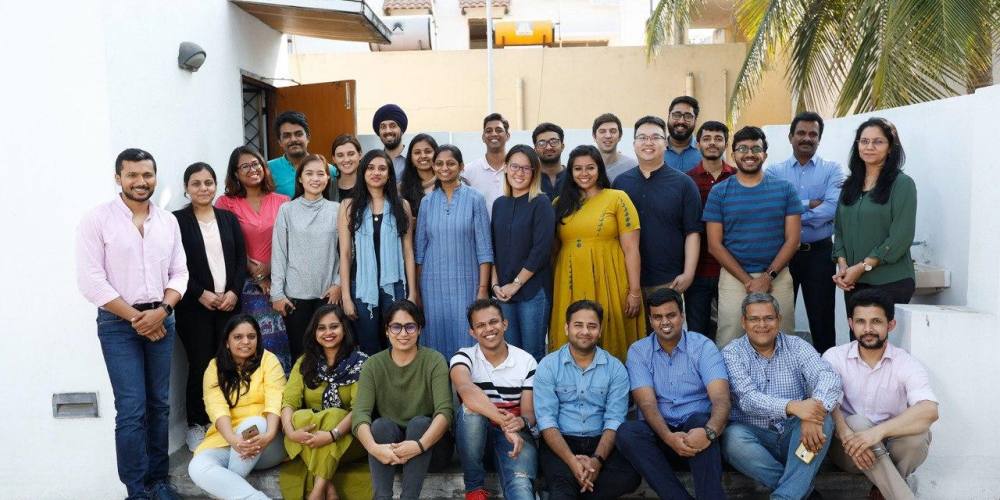|
Getting your Trinity Audio player ready...
|
Seeing a gap in Southeast Asia, The Ken plots a regional expansion with reporters across Thailand, Malaysia, Singapore, Indonesia, and the Philippines.
When the team at India’s The Ken, a one-story-a-day publication on technology, business and healthcare, felt that the company had found product-market fit in India, they began to think of their next steps. “We looked at various dimensions,” remembered co-founder Rohin Dharmakumar. “Should we be looking at new sectors? Products? Geographies?”
They landed upon Southeast Asia. “It was the strongest of these cases,” said Dharmakumar. “We’ve been reading the stories that come out of Southeast Asia and haven’t found a similar consistent sources of analysis. We were also increasingly seeing Indian startups going into Southeast Asia and vice versa.”
The allure
In a way, Dharmakumar explained, the region looked a lot like the India where The Ken started in 2016. “The growth rates, aspiration, and competitive drive in Southeast Asia were closer to what we see in India than what it would be in the U.S. and Europe,” Dharmakumar explained. “Additionally, many of these markets had significant numbers of people who are comfortable with English.”
They consulted with their first hire, Jon Russell, a Bangkok-based reporter who was covering Asia for TechCrunch at the time. “We spent a lot of time talking about what a product for Southeast Asia would look like,” Dharmakumar remembered. “There was a lot of convincing each other and bursting each other’s bubbles. You don’t want people to be too drunk on Kool Aid or too cynical as journalists tend to be.”
The Ken launched first with Russell in Bangkok in July 2019. In the next six months, Russell helped hire out their team, which now spans five journalists (including Russell) across Malaysia, Singapore, Indonesia, and the Philippines. “It was important for us to have journalists on board to get the local connections and have the pulse of the region,” Dharmakumar said. “We’re a reporting driven organization, and we don’t believe it’s easy to do quality stories remotely.”

A regional product
For the first six months, Southeast Asia stories were hosted on The Ken’s India site. This month, it announced that it would unbundle its Southeast Asia offering from its India offering. Customers who wish to read Southeast Asia coverage will have to subscribe to the new publication, which will come with an independent newsletter (Russell is the region’s managing editor). There’s a waitlist for the Southeast Asia product, but subscribers who already pay for The Ken’s India coverage get early access.
Pricing for the Southeast Asia product hasn’t been announced, but the Indian offering is priced at $108 annually and $50 quarterly. The Ken will also continue its strategy of building out content by segmenting its audiences into cohorts, not by demographics.
“People who read us are venture capitalists, investors, founders, professionals, business school students, policy makers, people who work in the tech and product space, entrepreneurs,” Dharmakumar said. “There’s a lot of action taking place in these fundamentals in the markets we’re expanding into.”
Will they come?
There are several challenges. One is obvious: convincing readers of the need for subscriptions.
“The shift toward subscriptions is sometimes a belief-driven plunge, and we may fail, but it requires belief. Nobody thought it would work in India, but it did.”
Yet, Dharmakumar says he’s confident — The Ken’s time in India has convinced them that emerging startup hubs have plenty of readers who will pay to have someone else read the tea leaves for them. “Consumers today are much more aware and attuned to the need for a quality product,” he said. “We try to prepare our readers for what might happen next. I don’t see a reason why someone in Indonesia or Malaysia or Thailand wouldn’t be interested in that.”
As The Ken builds out an increasingly international team, Dharmakumar also brings up the challenge of working remotely. “The culture issue is one of the most important things for us,” he said. “Until now, we’ve been in India, working in distributed bureaus. What does it mean to create a truly remote workplace?”
Then, there’s the issue that Dharmakumar doesn’t address directly. Although he describes The Ken as distinct in its analysis and unique from competitors, there are many other publications that focus on Southeast Asia. Deep-pocketed, international publications including Bloomberg and Wall Street Journal employ local reporters across the region, and a whole spate of media startups are offering tech news for free.
It seems to be a bet The Ken is willing to take. “It’s easy to conflate gaps and opportunities,” Dharmakumar said. “We like to think that this is an opportunity.”
Republished with kind permission of Splice: reporting on the transformation of media in Asia


